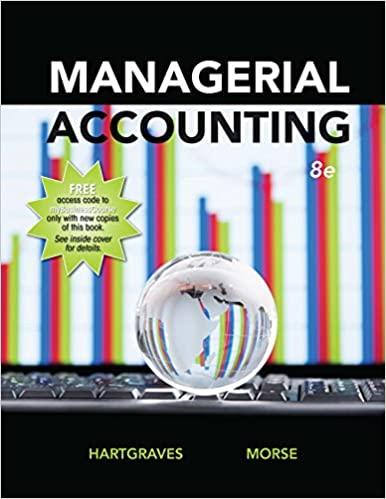Question
question 1- Wildhorse Co. uses a perpetual inventory system and the FIFO cost formula for valuing inventory. The company is now in the process of
question 1- Wildhorse Co. uses a perpetual inventory system and the FIFO cost formula for valuing inventory. The company is now in the process of comparing the cost of its inventory with its net realizable value. The following data are available at Wildhorse Co.s year end, December 31:
| Units | Unit Cost | Net Realizable Value per Unit | |||||||
|---|---|---|---|---|---|---|---|---|---|
| Clothing | 90 | $8 | $6 | ||||||
| Jewellery | 67 | 20 | 23 | ||||||
| Greeting cards | 49 | 1 | 2 | ||||||
| Stuffed toys | 50 | 12 | 39 | ||||||
Determine the lower of cost and net realizable value of the ending inventory assuming Wildhorse Co. applies LCNRV on individual items.
| Lower of cost and net realizable value | $enter the Lower of cost and net realizable value in dollars |
Prepare the journal entry required, if any, to record the adjustment from cost to net realizable value. (Credit account titles are automatically indented when the amount is entered. Do not indent manually. If no entry is required, select "No Entry" for the account titles and enter 0 for the amounts.)
| Account Titles and Explanation | Debit | Credit |
|---|---|---|
| enter an account title to write down inventory to lower net realizable value | enter a debit amount | enter a credit amount |
| enter an account title to write down inventory to lower net realizable value | enter a debit amount | enter a credit amount |
| (To write down inventory to lower net realizable value.) |
question 2- Cullumber Company uses a periodic inventory system. Its records show the following for the month of April, with 23 units on hand at April 30
| Units | Unit Cost | Total Cost | ||||||||||||
|---|---|---|---|---|---|---|---|---|---|---|---|---|---|---|
| April 1 | Inventory | 31 | $7 | $217 | ||||||||||
| 12 | Purchases | 45 | 11 | 495 | ||||||||||
| 16 | Purchases | 14 | 12 | 168 | ||||||||||
| Total | 90 | 880 | ||||||||||||
Calculate the ending inventory and cost of goods sold at April 30 using the FIFO and weighted average cost formulas. (Round the weighted average cost per unit to 2 decimal places, e.g. 52.75 and final answers to 0 decimal places, e.g. 5,275.)
| FIFO | Weighted average | |||
|---|---|---|---|---|
| Ending Inventory | $enter a dollar amount | $enter a dollar amount | ||
| Cost of Goods Sold | $enter a dollar amount | $enter a dollar amount |
Prove the cost of goods sold calculations. (Round the average cost per unit to 2 decimal places, e.g. 52.75 and final answers to 0 decimal places, e.g. 5,275.)
| Check of Cost of Goods Sold (FIFO): | ||||||
|---|---|---|---|---|---|---|
| Units | Unit Cost | Total Cost | ||||
| Apr. 1 | enter a number of units | $enter a dollar amount | $enter a dollar amount | |||
| Apr. 12 | enter a number of units | enter a dollar amount | enter a dollar amount | |||
| enter a total number of units | $enter a total amount | |||||
Weighted Average
| Check of Cost of Goods Sold: enter a number of units $enter a dollar amount per unit = $enter a total amount . |
Step by Step Solution
There are 3 Steps involved in it
Step: 1

Get Instant Access to Expert-Tailored Solutions
See step-by-step solutions with expert insights and AI powered tools for academic success
Step: 2

Step: 3

Ace Your Homework with AI
Get the answers you need in no time with our AI-driven, step-by-step assistance
Get Started


